As a mum and former international Flight Attendant and second-generation domestic Purser I know that “Preparation is the key to success!” and when it comes to travelling with young children, I find this to be particularly true. The easiest way to make your journey as smooth as possible is to be as organised as you possibly can.
So here are 50+ tips for travelling overseas with kids
to avoid becoming the cliché terror family of the flight, take these tips onboard – literally!
If you do a lot of “last-minute” travel, like my family, it’s important to have a checklist. I’ve also broken the process down into five stages, to help make your trip not just bearable, but enjoyable.
STAGE ONE: RESEARCH
1. If you have a destination in mind, you’re already a step ahead and can move to Tip2. If all you know is that you need a holiday but you’re not sure where to go for your trip away as a family keep in mind the following points:
-
Time on aircraft
-
Connections, transfer times
-
Available Family activities / events
-
Climate / season
-
Food
-
Transport options – Flying Vs. Cruising
-
Quieter travel periods, i.e. not school holidays / peak periods
-
Safety and security (Australians should check Smartraveller)

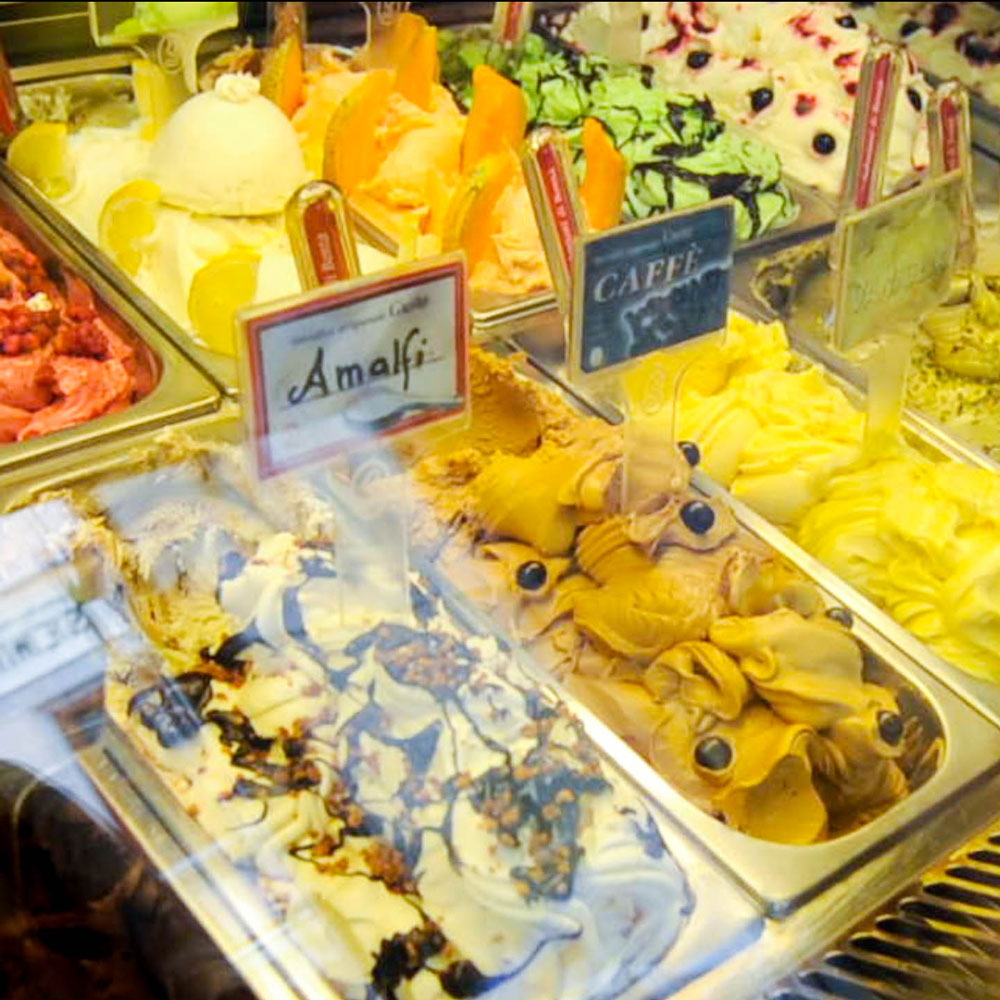
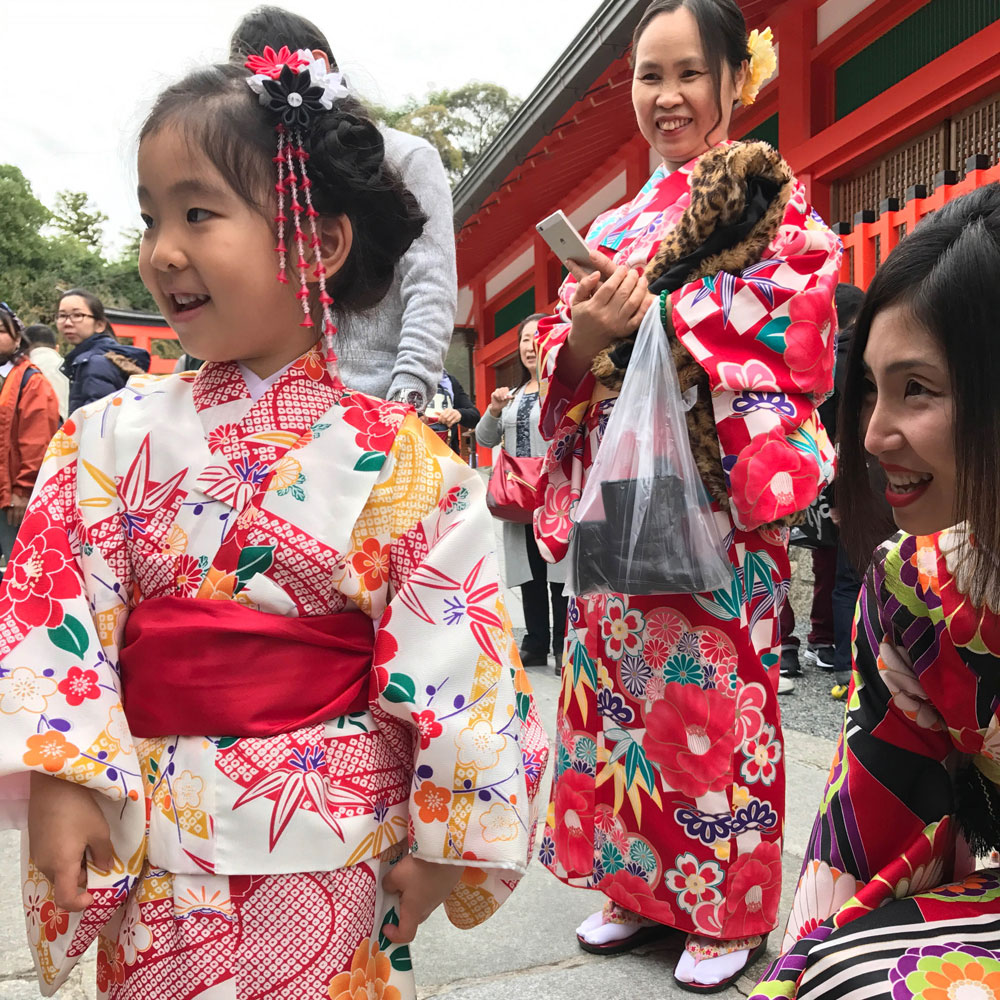
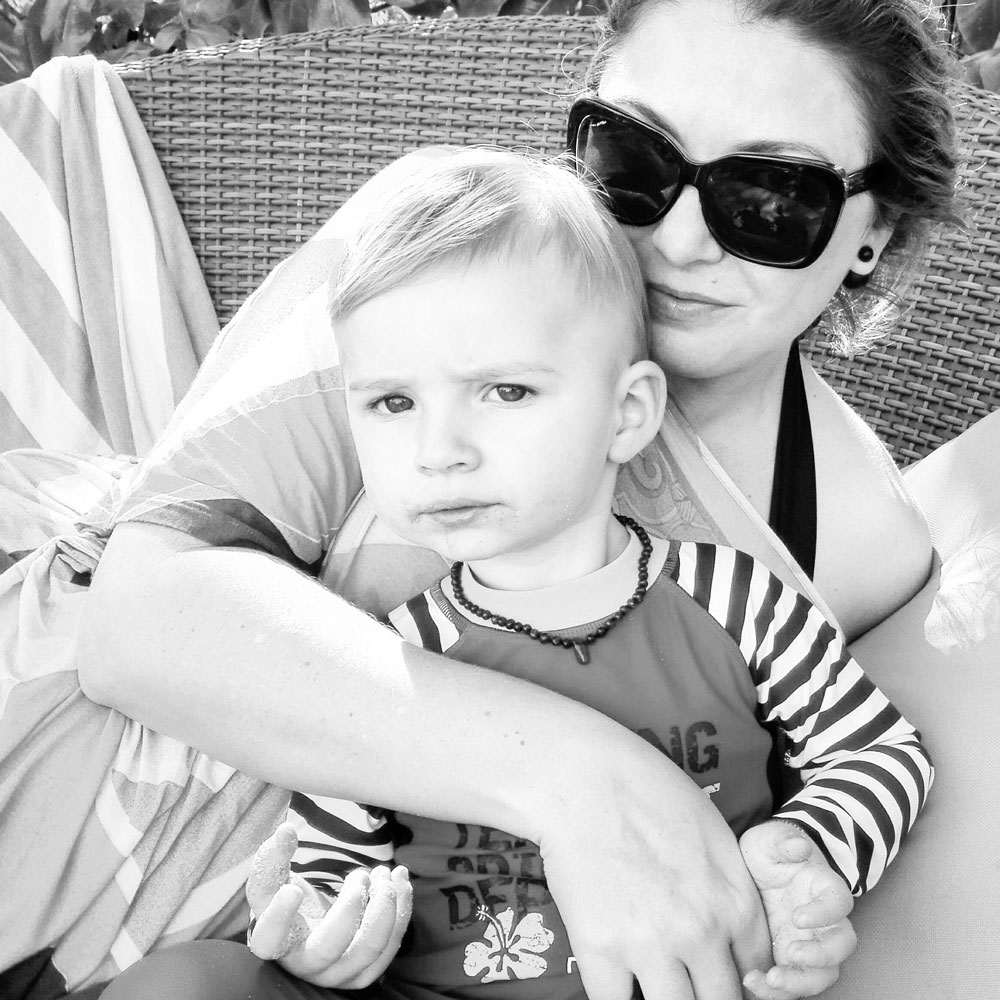
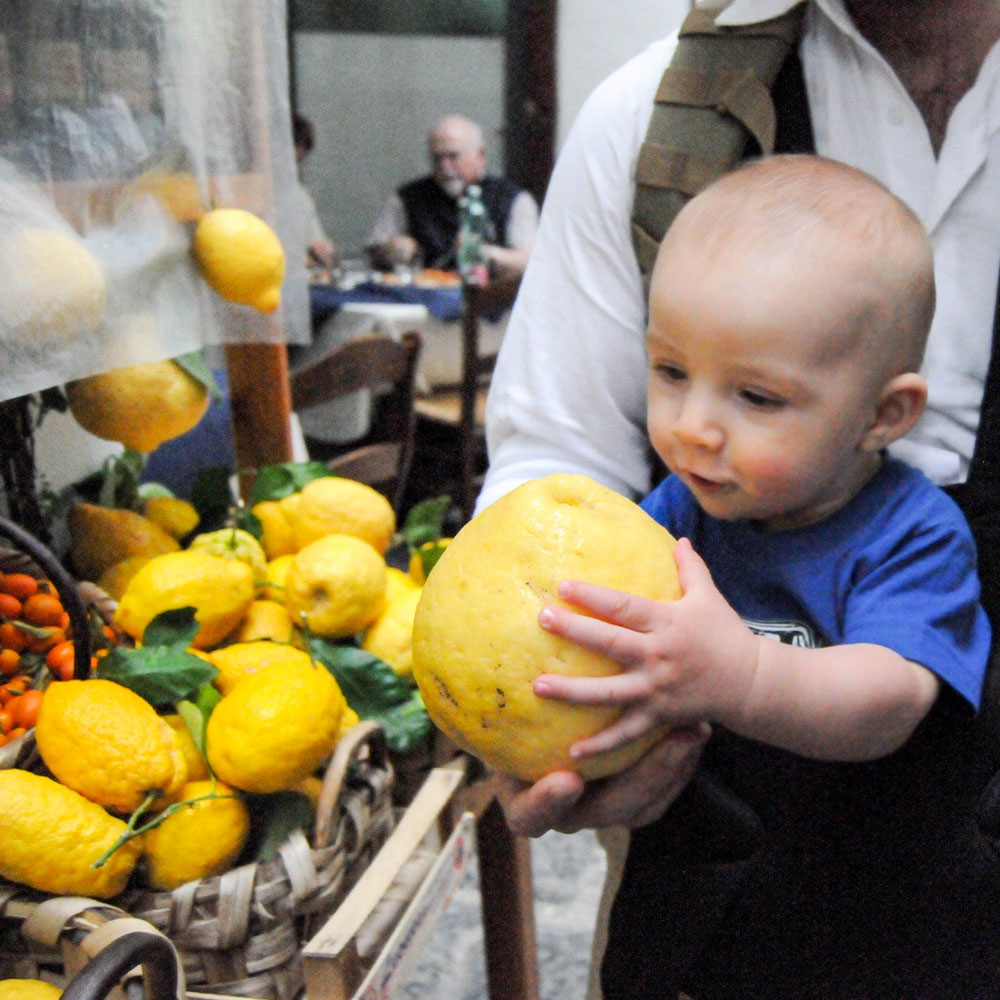

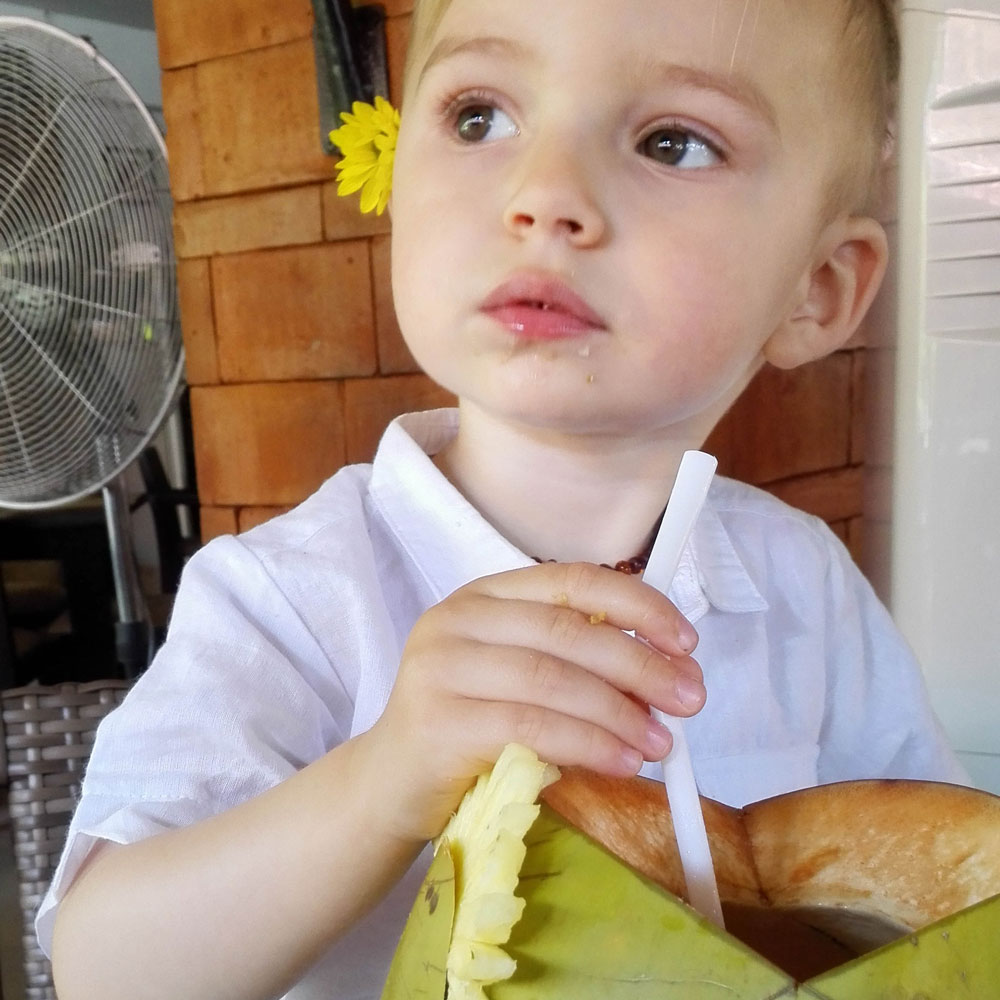
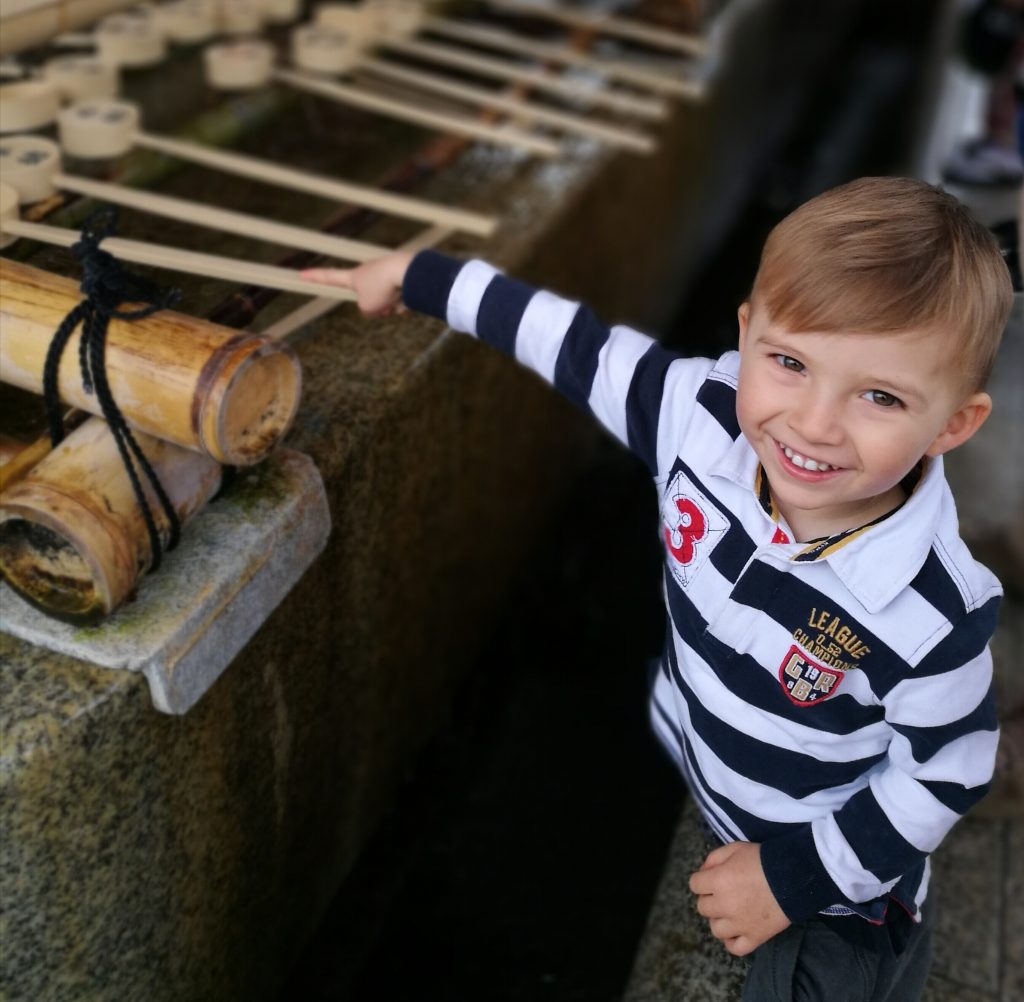

FLYING
2. Direct Flights are Worth It – You may have to pay extra, but it’s well worth investing in the simplest (and fastest) route. The last thing you want is to be racing to make your connection due to delays or worse still, being stuck by (or with) a cancelled connection. Multiple sectors also ups your chances of lost luggage and you can well imagine the stress and issues this can cause.
3. If you can’t avoid connections, make the most of the pit stop and take a few days to explore what’s on offer while passing through. See if your airline allows for a different stop-over on the way home, or consider “around the world” tickets that allow you to make multiple stops but usually only in one direction around the globe.
4. Evening flights can be helpful in keeping the sleep routine in check. Keeping in mind your sleep is likely to be disrupted and uncomfortable.
5. Secure your seats – If you have a good travel agent they should be able to organise your seat allocation and advise on the best arrangement for you. If you’re purchasing your flights online directly with the airline you can often choose your seats electronically, or at least learn what type of aircraft is operating (which can change but rarely for a completely different configuration of aircraft). Once you know the aircraft type you can Google the seat layout and work out what configuration works best for your family.
6. If you’re travelling with an infant, the airline will gladly place you in a bulkhead row (more leg room) with an infant bassinet. However, there are only a few of these, even on larger aircraft and so it’s important to book early or speak with your travel agent or the airline directly to secure these seats.
7. If you can’t secure the bulkhead, ask for a row to yourselves and have the airline or travel agent block out the middle seat. If you’re travelling with a child 2-years-old or older, you will be paying for their own seat, so make the most of it. If you're travelling with one or three adults, give your child the window and yourself the aisle, leaving the middle seat empty. Middle seats are less likely to be taken until the aircraft starts filling up. If you’re lucky (like we have been) you’ll score the entire row to yourself.
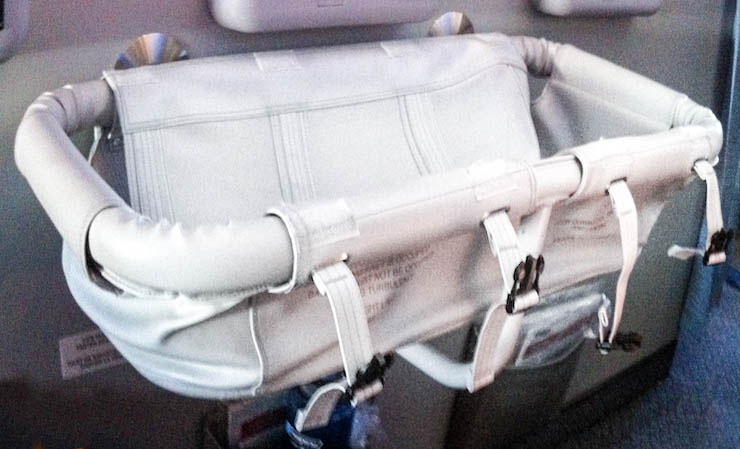
8. Some airlines charge extra for emergency exit or bulkhead rows with extra legroom, and while children and infants are not permitted to sit in Emergency exit rows (even during the flight), we recommend paying the extra money for at least one of these seats (if you’re travelling with more than one adult, of course). This way the adults can take turns stretching their legs. Try and book the row behind the exit row, so you’re still at arm's length from each other.
**Always take note of the seat numbers you have booked and make sure the airline issues the correct seats at check-in! Sometimes their computer system tries to auto-correct the booking and places the entire family together. If this occurs and can not be corrected at the time of check-in, ensure that you are reimbursed for the additional seating cost charges and/or compensated for the airline's mistake.
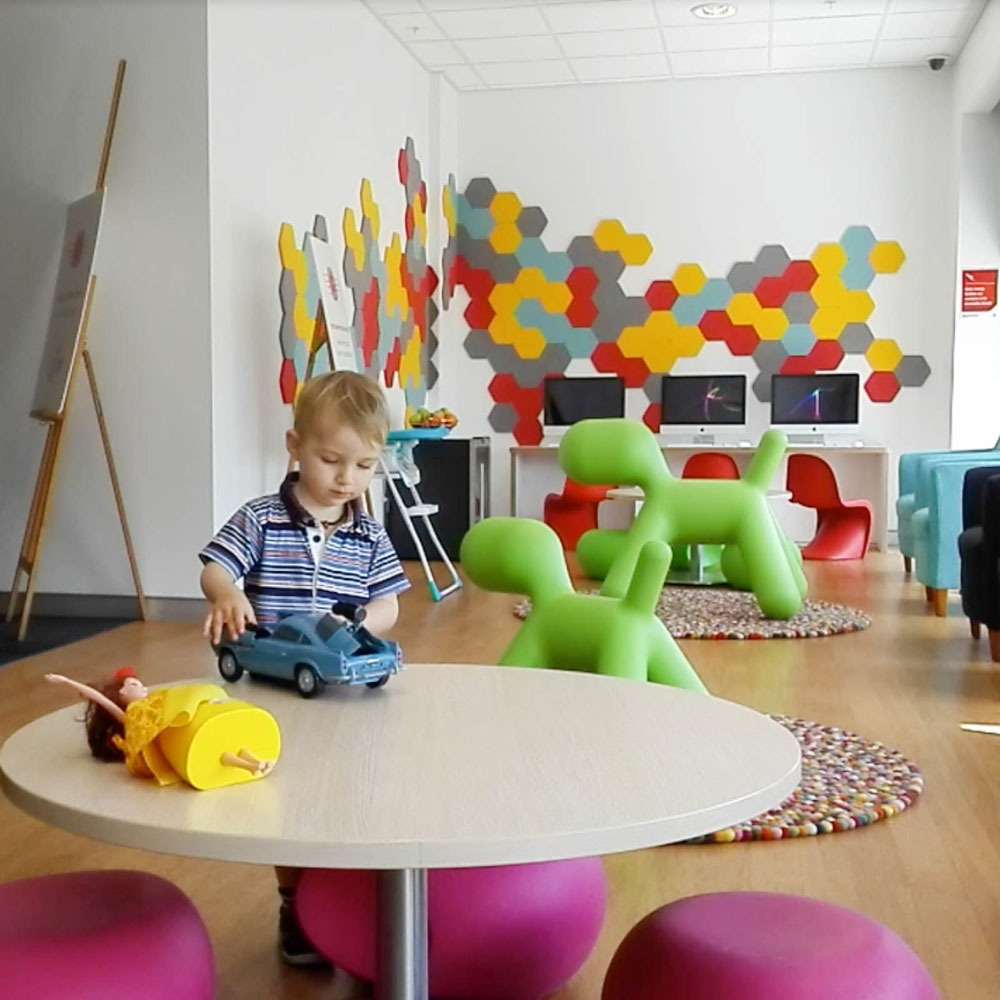
9. Confirm access and availability (opening hours) to your airline's lounge in all the ports you are travelling through. Most airlines have partnerships and although you may not be travelling directly with your preferred airline you may still be able to access the partner's lounge. For those who have experienced a delayed flight you know the value access to a club/lounge provides. This is particularly true when travelling with children. Many lounges now provide dedicated children's areas to help keep them entertained and even without this bonus area, lounges provide the added comforts of non-stop food, drink and the luxury of a shower!
10. Check your credit card's entitlements when it comes to airline lounge access (and travel insurance). Many credit cards partner with airlines and offer bonus incentives such as complimentary guest passes.
11. Sign your child (2y.o+) up for your airlines’ frequent flyer program*. It’s never to early to start earning points and if you travel regularly as a family what a great gift in years to come – they might have even earned enough points for a free trip! *check your airline’s specific requirements.
12. Check out PINTEREST for endless lists of helpful tips for entertaining your child onboard.
HEALTH
13. Get a health check – ensure that specific vaccinations are not required before travelling to your destination.
14. If your child requires specific medication, get a letter from your GP in case you need to top up or get a replacement while away.
a. Check your required medications are permitted in the countries you intend to visit, as some have strict restrictions.
b. If you need to take a liquid medication that exceeds more than 100ml, you’ll need a letter from your doctor to pass security and take this onboard.
15. Research if your destination's water supply can be drunk directly from the tap. Many countries require their water to at least be boiled before consuming. Other's should just be avoided altogether. Knowing this will help you to pack sufficient bottles of water in advance. Consider packing a refillable water bottle with a built-in filter.
16. Confirm your family's travel insurance. The cost of medical care overseas can be extremely expensive. It's worth paying a few hundred dollars upfront for the peace of mind that your family will be supported if you require basic medical care or worst still, in the case of an emergency. Check whether your credit card company offer's travel insurance. Many do, but may not cover all family members traveling with you.

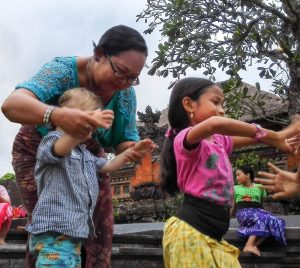
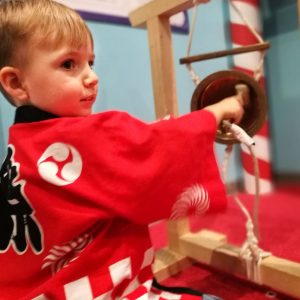

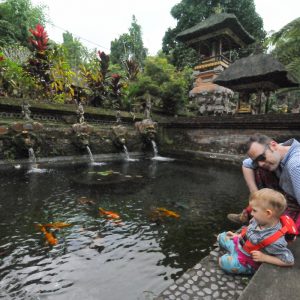

ACTIVITIES
17. Research what child-friendly activities are on offer at your destination/ during your stay. Children grow-up all over the world and even in the most remote and hostile places on earth, there’s child-friendly events, festivals and playgrounds.
Visiting a playground is a great opportunity to provide some “normalcy” and a natural environment to interact with local children.
ACCOMODATION
18. Review child-friendly accommodation. Some hotels and AirBnBs cater for children more than others. Take into account:
a. Facilities - these may range from slippery slides and water-parks within the pool compound to full child-minding services and playgrounds.
b. Catering - depending on the age of your children some hotels offer deals such as “kids eat free”.
c. Location – keeping transport to a minimum while in-country can help reduce stress and allow for more time doing the things you want to be doing. Finding accommodation that is close in proximity to the major attractions and activities you plan on attending can be a worthwhile investment.
Some hotels also offer airport transfers and shuttle buses to local attractions. Factor in the savings this offers, both in terms of cost, time and stress.
d. Additional costs – whether you’re staying at a hotel or AirBnB often there are additional charges depending on the number and age of the children and/or cots/ bedding required.
e. Safety/Security - If you decide to stay in an AirBnB (as we have many times as a family) check the host is happy to accommodate kids and has a child-friendly property (noting stairs, fireplaces, ponds and adequate pool fencing, etc.).
*Remember other countries may not have the same safety standards as your own!
TRANSPORT
19. HIRE CARS - If you plan on hiring a car, ensure you:
a. have an international drivers licence;
b. understand the road rules; and
c. organise for the appropriate car seats and capsules required by your host nation.
20. PUBLIC TRANSPORT – Check your destination does not require transport cards to be purchased ahead of time in place of paying cash.
e.g Japan Rail Passes must be purchased before entering the country.
e.g. Australian bus/train networks vary from state to state and some modes of public transport only accept payment via prepaid travel cards which must be purchased before hopping onboard.
21. BICYCLE HIRE – Some destinations are better suited to exploring by bicycle, depending on the typography (flat landscape and cycling tracks), size of your family and level of fitness. Cycling through cities can be a great way to see more than the usual touristy bits and a faster way to explore than on foot. Just like driving, ensure you’re familiar with the local road rules and choose a reputable hire company who provide well-maintained bikes, clean child-seats and capsules, and who support you to understand the nuances of cycling in their city i.e. where you can and cannot park your bikes, etc.
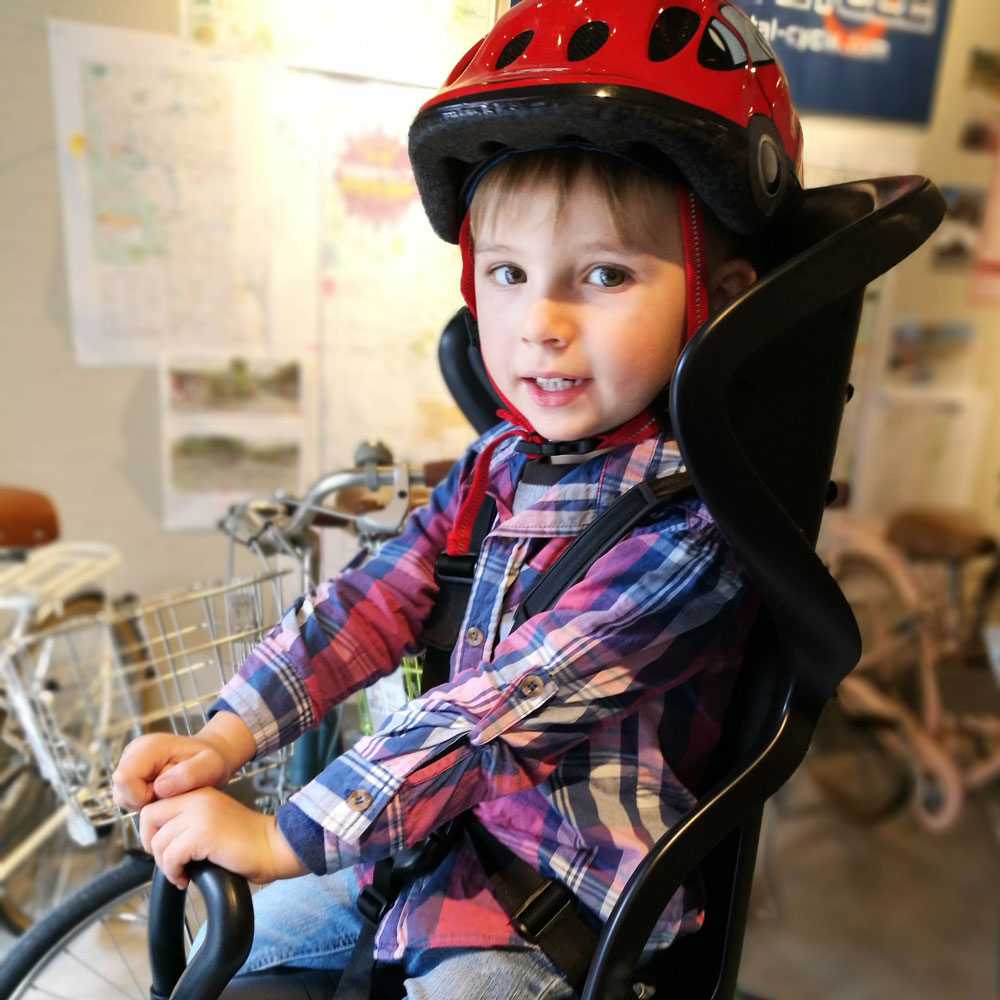
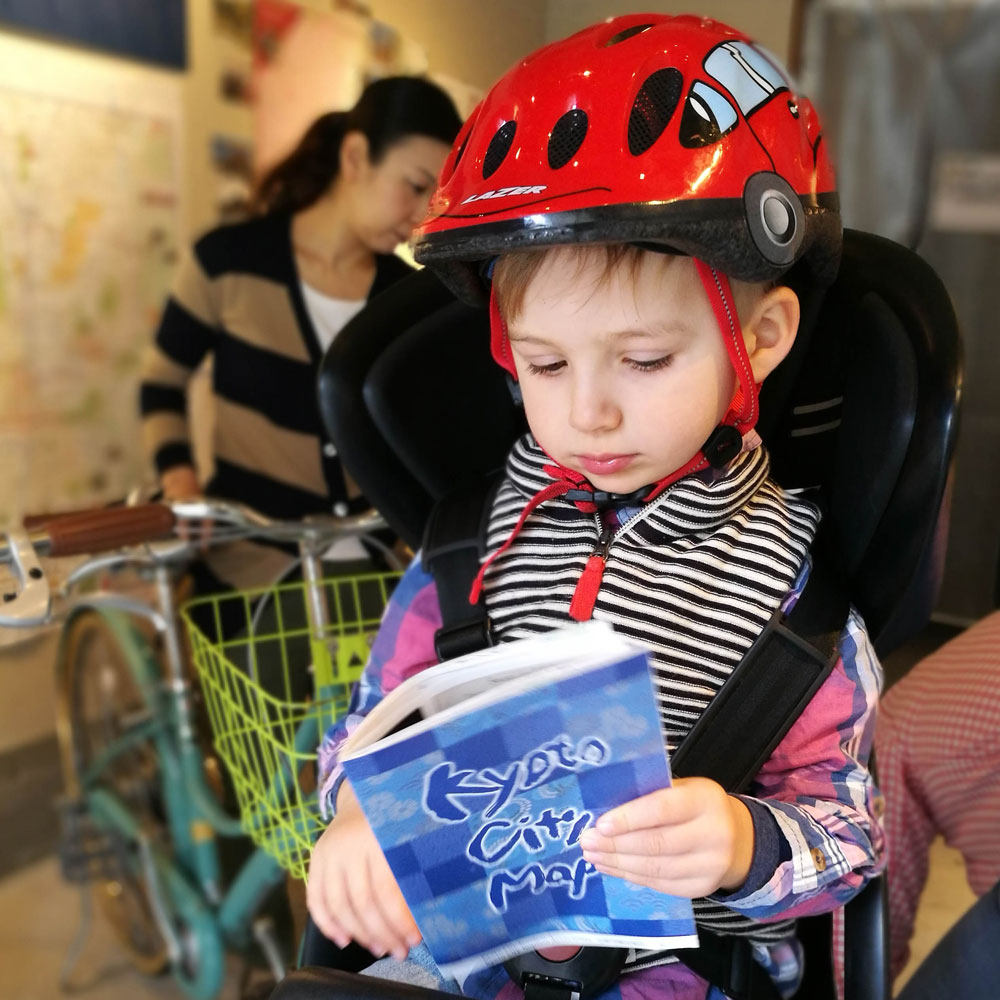
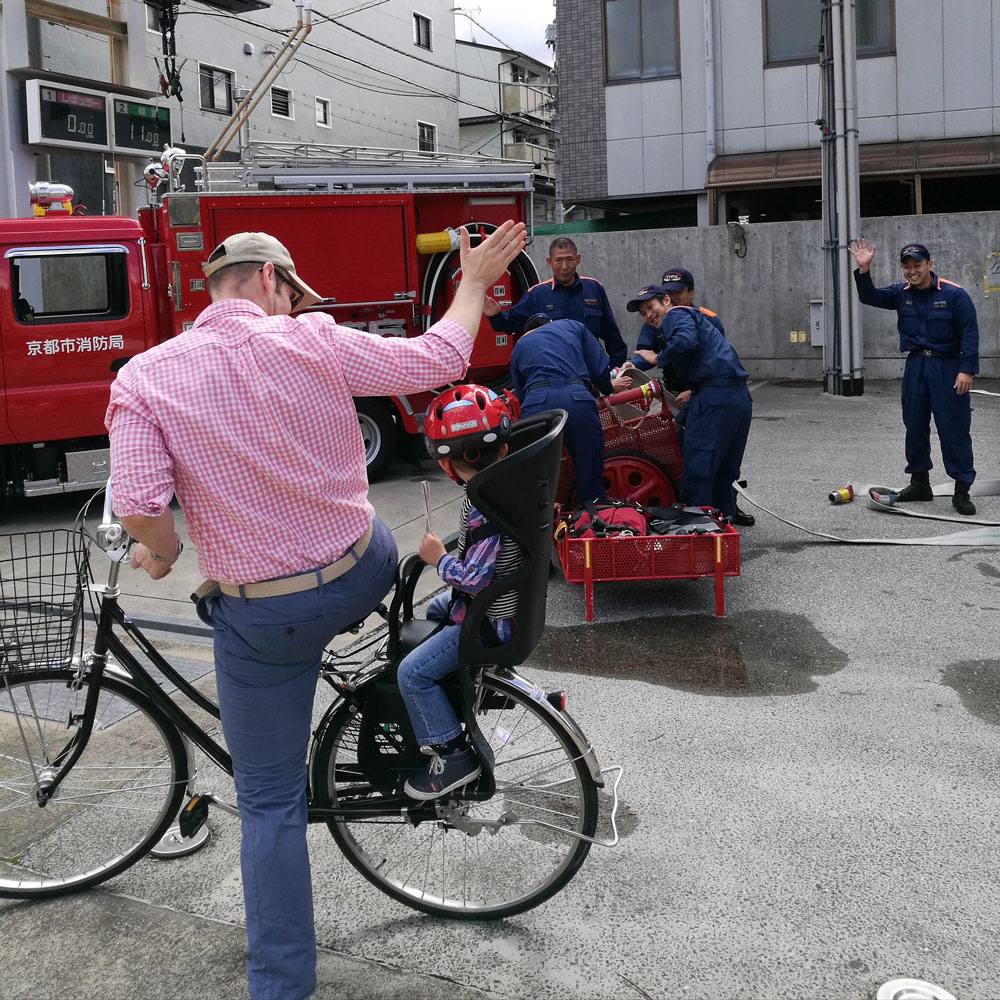
STAGE TWO: PRE-FLIGHT
PACKING
22. Keep baggage to a minimum – the less you have to carry and worry about the easier the journey will be. Even full-fare airlines will charge you for excess luggage and some even weigh carry-on at the gate.
23. Create a checklist to help you organise your carry-on vs. check-in luggage essentials. A checklist can also be handy when leaving accommodation to ensure you have everything, ensuring someone’s favourite toy isn’t hidden under the bed, for example.
24. Give your child a gift bag – one that is especially for them to carry onto the aircraft that will contain their bare essentials – ideally a backpack or Trunkie.
25. Get your little one involved and excited about the trip by having them pack their own bag.
26. Pack a small carry-on medical kit for onboard the plane and another for your destination. While most airlines will have the bare essentials such as band-aids and sick bags, they will not supply medication (even basic pain-relief tablets).
27. Pack sanitation liquid – hand wash. Let’s just say planes are not the cleanest of places.
28. Buy (and pack) child-friendly earphones for either their technology and the in-flight entertainment.
29. Charge and pack their preferred entertainment system.
30. Upload new APPS and VIDEOS for their tablet/phone that can be used without WIFI access, and/or bring their favourite DVDs.
31. Depending on your child’s age and level of interest pack their own digital camera (or smart phone/tablet) so that they can capture the adventure from their perspective.
32. Pack a multi-socket powerboard, so that even if you only have one international power converter you can charge a few things at once.
33. When travelling Zip Lock Bags are your best friend, pack various sizes, pre-pack outfits; use them to store wet things; and keep some in your day bags for snacks, emergency nappy changes, wet cloths, etc.
34. Food preparedness – pack your child’s favourite non-perishable snacks (for the flight and beyond, keeping in mind your destination’s quarantine limitations).
35. Pack drinks into your check-in luggage as liquids more than 100ml are not allowed through security ** there are a few exemptions to this rule, i.e. prescribed medication (requires a letter from your doctor).
36. Pack a couple of EMPTY water bottles into your carry-on luggage as these can be filled-up once you go through airport security to help save money and convenience, as the drinks cart and flight attendants are unable to serve passengers during take-off and landing, and sometimes during extended periods of turbulence.
37. Pack a NEW toy as a distraction and memento for the trip.
38. Pack a change of clothes for parents AND child – even if your child makes it to the onboard toilet, the bathrooms are so tiny and awkward accidents can happen!
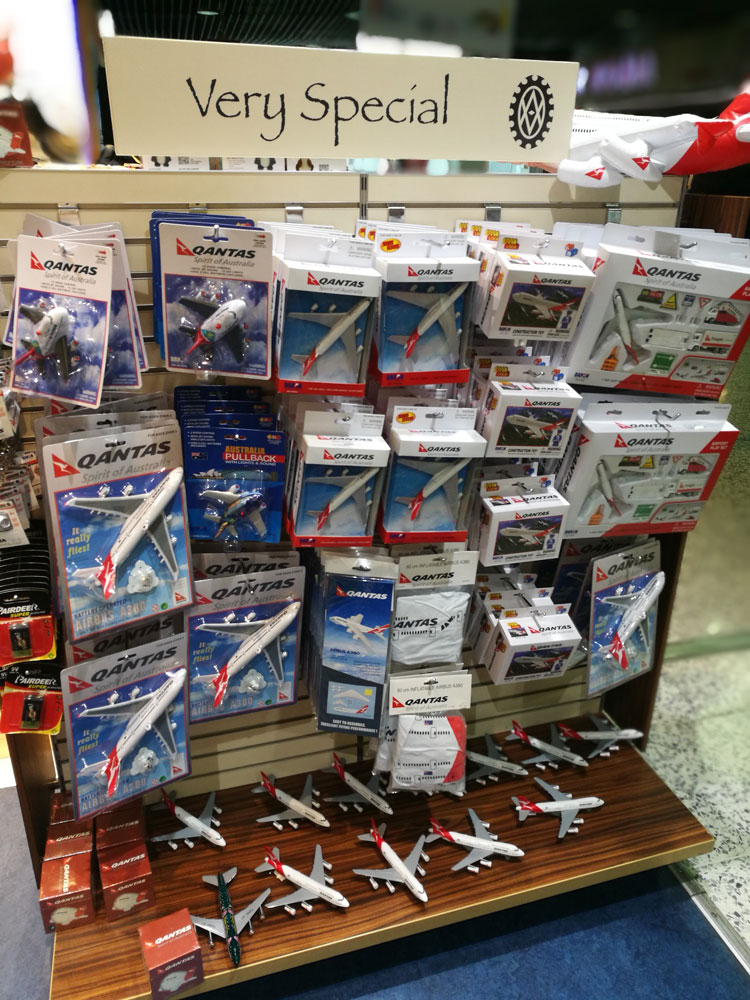
Research
39. Ensure you have an on-arrival plan in place, i.e. book transfers to your accommodation or at least know how to get from the airport to the taxi, train or bus that will get you to where you need to be as quickly as possible. Any journey with children is long – keep it as simple as possible for their sake and your sanity.
40. Get orientated, Google your nearest medical centre or hospital so you have some idea of the time it may take to get to there from your accommodation should your child feel unwell in the middle of the night. Also, save the local emergency services number to your mobile.
41. Follow-up on tip 36 and fill those empty water bottles after you’ve been screened through security.
42. If you forget tip 37 (pack a new toy) – check out the airport or onboard duty-free as often they stock mini versions of aircraft and holiday-related toys.
43. Encourage your child to go to the toilet before boarding the aircraft. Toilets on planes are not known for their roominess and while most are equipped with change tables, they can be awkward and extra smelly. **Please also be mindful of the noise the flush can make. This can be frightening for a young child and the change of pressure can also hurt their ears. It’s best to open the toilet door and flush as you’re leaving. Minimising your trips to the onboard bathroom also minimises exposure to stranger’s germs.
STAGE THREE: ON BOARD
44. Ear soreness – children are susceptible to suffering the pain caused when your ear canals/drums can’t equalise with the shift in altitude. Prepare a bottle or breastfeed your infant on take-off and decent. Pack lollypops and chewable soft-lollies (preferably sugar-free) for toddlers and older children who are still not ready for chewing gum. You could also use these as a reward for good behaviour during the flight while having the added bonus of helping to ease the pain, which can be excruciating! In extreme cases: it can cause a ruptured eardrum or severe infection resulting in hearing loss or permanent ear damage.
Check with your Doctor prior to departure: we've found it useful to use a nasal spray and/or a decongestant 1-hour prior to landing and also post-flight until ears normalise. It's important to follow your medical practitioner's advice as overuse of nasal sprays can cause more congestion.
45. I can’t claim this idea as my own and don’t know how successful it would be, but I’ve heard of parents preparing little lolly bags with notes attached apologising in advance for their child’s behaviour onboard. It might be a nice gesture but I believe if you follow the majority of my tips, you’re organised and put a little bit of faith in your child, you shouldn’t need this. If you decide to use this tip – please let us know how you go!??
46. General consideration – More than apologetic gift packs, your fellow passengers will appreciate a genuine degree of consideration on your part. Keep noise to a minimum, ensure your child isn’t kicking the seat in front or standing up and pulling faces at the people behind. I’ve found that flight attendants are more helpful to parents who try and keep the mess to a minimum and who are obviously trying to manage unruly children.
47. Inflight Entertainment – Many full-fare airlines provide electronic entertainment specifically for children, such as Disney movies, popular TV programs and video games. However, most low-cost carriers offer limited entertainment options, even when you pay extra for them. So please refer to tips 29 & 30.
48. If you have forgotten tips 29 & 30 and 37 is unavailable, ask your flight attendant if they have any “children’s packs” onboard. Most full-fare airlines provide these free of charge while low-cost-carriers often sell them for a few dollars.
49. If tip 48 isn’t an option, ask your flight attendant for any spare paper and a pen. Drawing, origami, join-the-dots or naughts and crosses can at least pass some of the time, although paper-aeroplane competitions are typically not appreciated by other passengers.
50. Ensure you have your passports handy and complete your customs/quarantine/arrivals declarations before disembarking the aircraft, as you don’t want to waste time filling out these forms and waiting in-line unnecessarily.
STAGE FOUR: IN COUNTRY
51. Understand your child’s needs are the priority and, just like at home, everything takes a little more time than it used to. If you’ve travelled independently you’ll notice that it’s very different from travelling with a partner or friends – you have to take their needs and wants into consideration and it can often slow you down or in some cases speed you up (some people just can’t spend hours taking photos of the same ancient ruin from different angles and appreciate the patience required to wait for that perfect shot at various times of day/night! ;p). This problem is amplified when you throw children into the mix. Even with a tightly established routine at home, they’re understandably out of their comfort zone in a foreign land and can want to eat, drink and go to the toilet at the most inopportune times.
52. Plan your day in advance – as I said from the out stead being prepared is the key to a successful family holiday. This is also true once you’ve arrived:
- Keep tabs on the weather to ensure everyone is dressed appropriately or if you need to pack extra items, e.g. jumper, raincoat, swimmers, for later in the day.
- Freeze drinks the night before and pack snacks ready for the next day.
53. Use band-aids to cover accessible power sockets in your accommodation.
54. Pack small, lightweight toys to help focus attention at mealtime or when you’d like some quiet time, at the Zen rock garden, for example.
55. Don’t be ashamed to use a harness. Would you rather be judged for “putting a leash on your kid” or for losing your child? If you’re visiting popular tourist attractions, it’s easy for little ones to get lost in a crowd.
Also, your host country may not have the same attitudes to safety as home and unless you’ve been there before, you may not be aware of other dangers such as cliffs, open fires or water hazards.
There’s an array of child’s backpacks that double-up as a harness.
56. If you just can't bring yourself to use a harness and you're planning on doing quite a bit of walking consider using a baby carrier. Depending on your chosen brand of carrier and the size of your child you can generally use a carrier up to the age of three. It's a great alternative to travelling with a pram and allows your little one to see things from a different perspective.
57. Emergency Travel Card - Pin an emergency travel card containing identification and contact information in your child’s pocket and backpack. This can contain a bit more information than an ID bracelet and could include parent’s/guardian’s names, hotel location and contact details and any medical requirements.

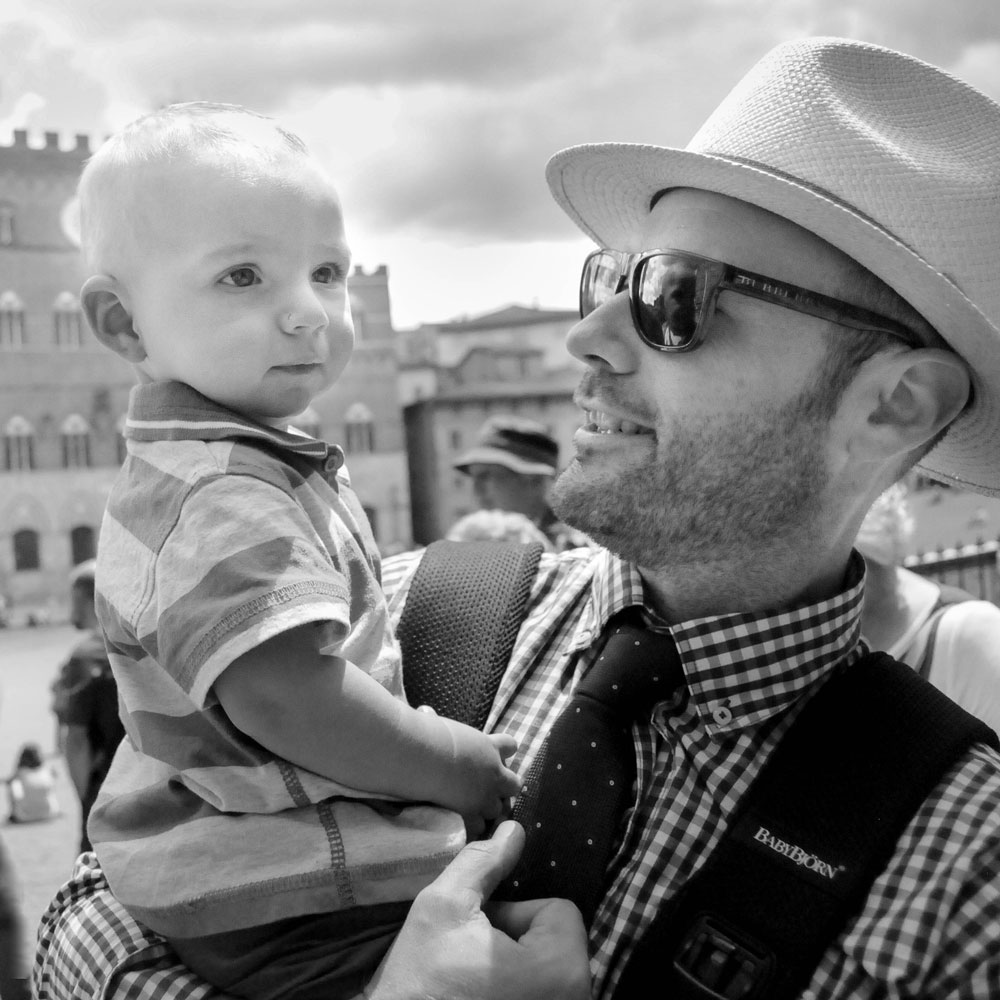


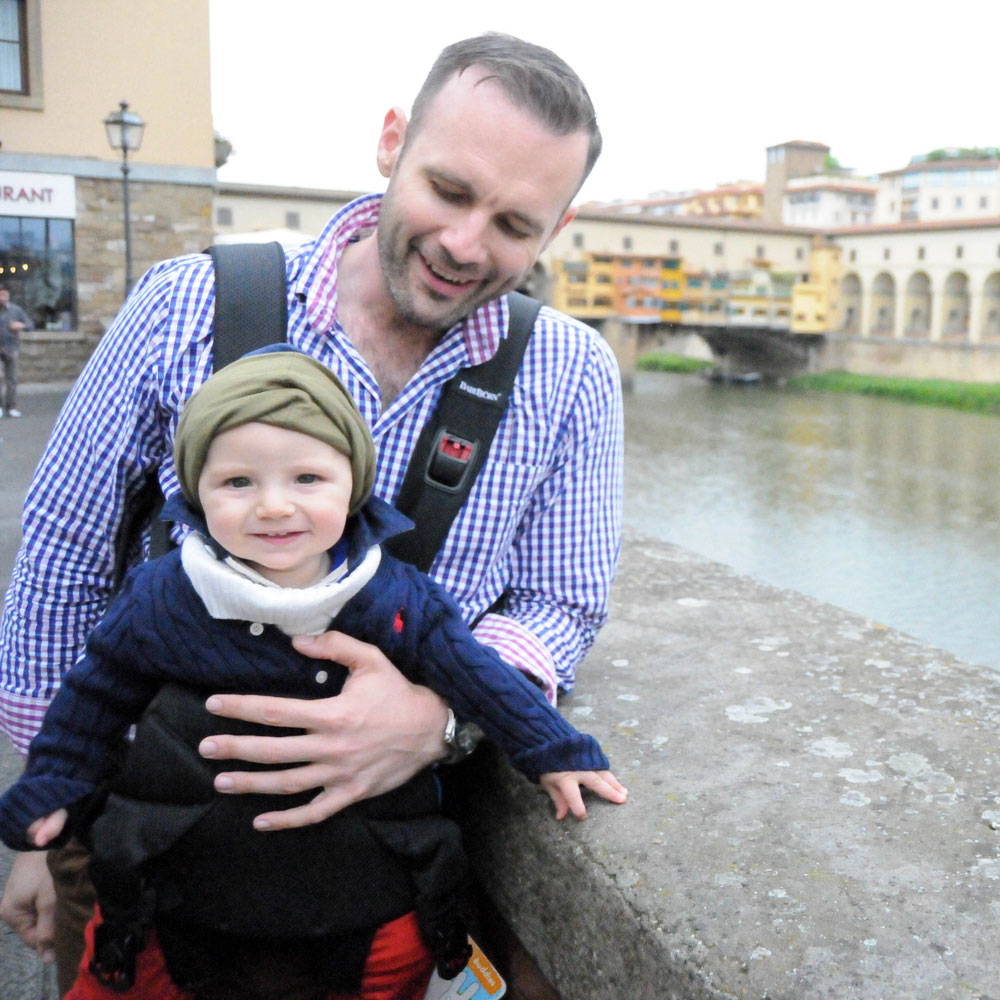

If you’re travelling internationally, this card should be written in both your native language and translated into your host country’s language.
58. Carry a recent photo of your child (not just on your phone in case it is stolen or lost in the confusion), so you can identify that you are indeed their parent/guardian and help authorities locate them as soon as possible.
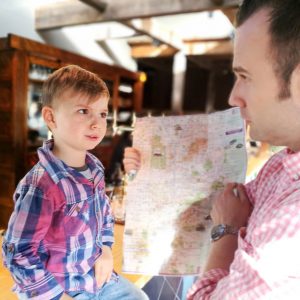
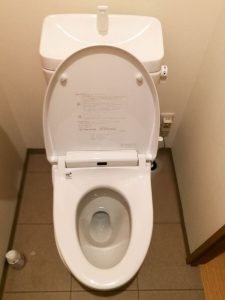
59. Have a plan in case you become separated. Use obvious landmarks or “familiar” places such as your accommodation keeping in mind that you don’t want your child wondering too far alone where they can get really lost. I always think of Alice in Wonderland who admits, “it’s good advice to stay where you are until someone finds you!” Try and teach your child to remain calm in this situation and to look for other children/mum’s and families who may be able to help. This may be the best approach for younger children, but for those who can communicate effectively, encourage them to find a shop assistant (who can not leave their post, but) who may have access to a phone to call you or the authorities or make a public announcement over a loudspeaker.
60. Parents rooms – locate toilets and parents rooms in advance to help save time and drama. Also note that the style of bathrooms can differ throughout the world, for example, Asian and particularly Japanese toilets are VERY different from Western restrooms. Be prepared for varying hygiene standards.
61. Immerse yourself in the culture – find family-friendly activates, festivals and child-focussed spaces. You’ve travelled all that way, make the most of the experience and have fun learning about your host nation; its history and its people. Chances are your destination offers different experiences for your children than from what’s on offer at home. There’s always points of difference you can compare and discuss here are some examples:
- cuisine
- customs
- language
- dress
- music/art
- architecture
- transport
- landscape - flora
- fauna
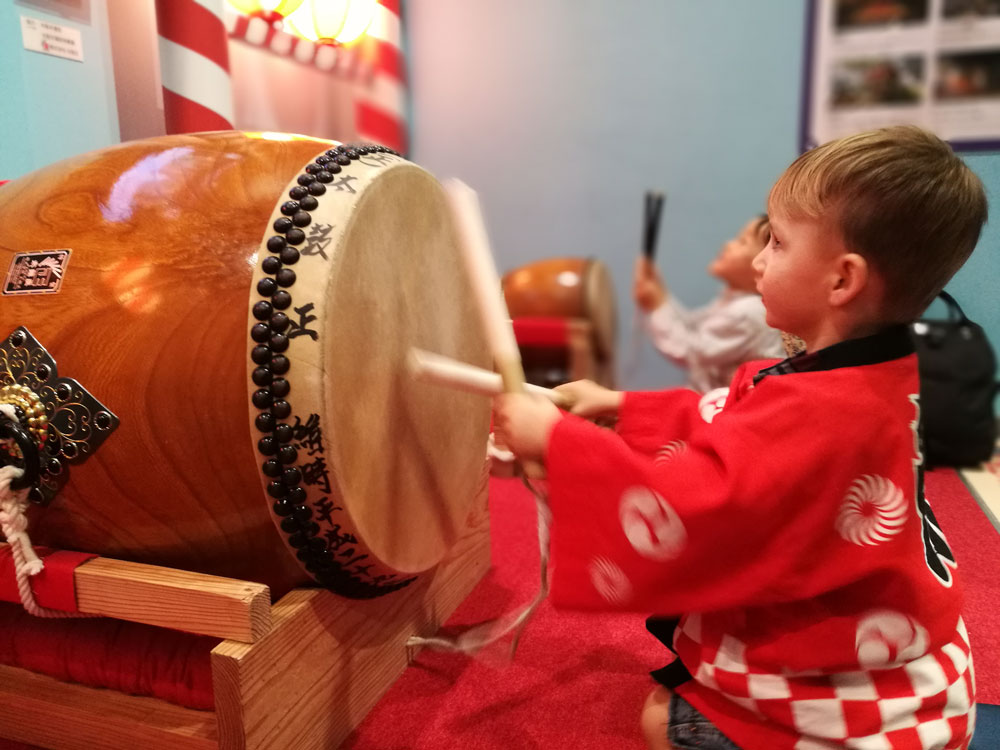
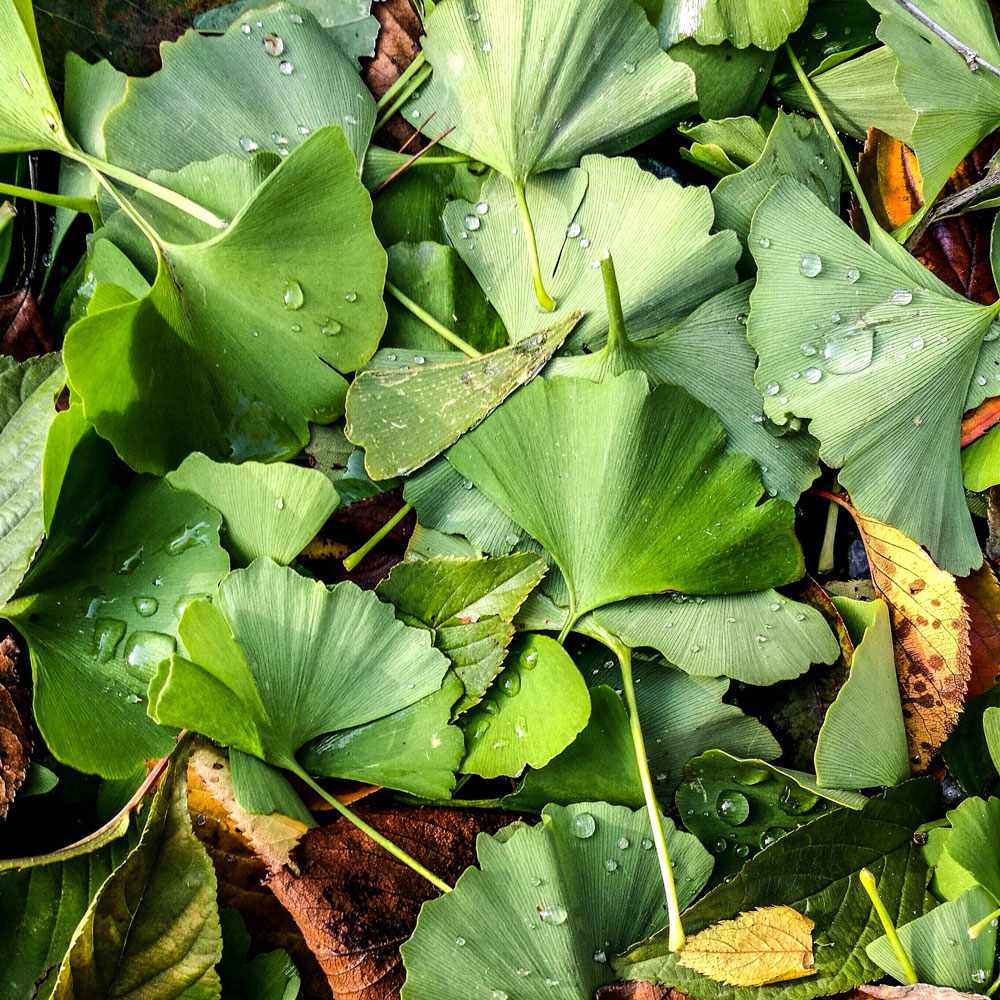
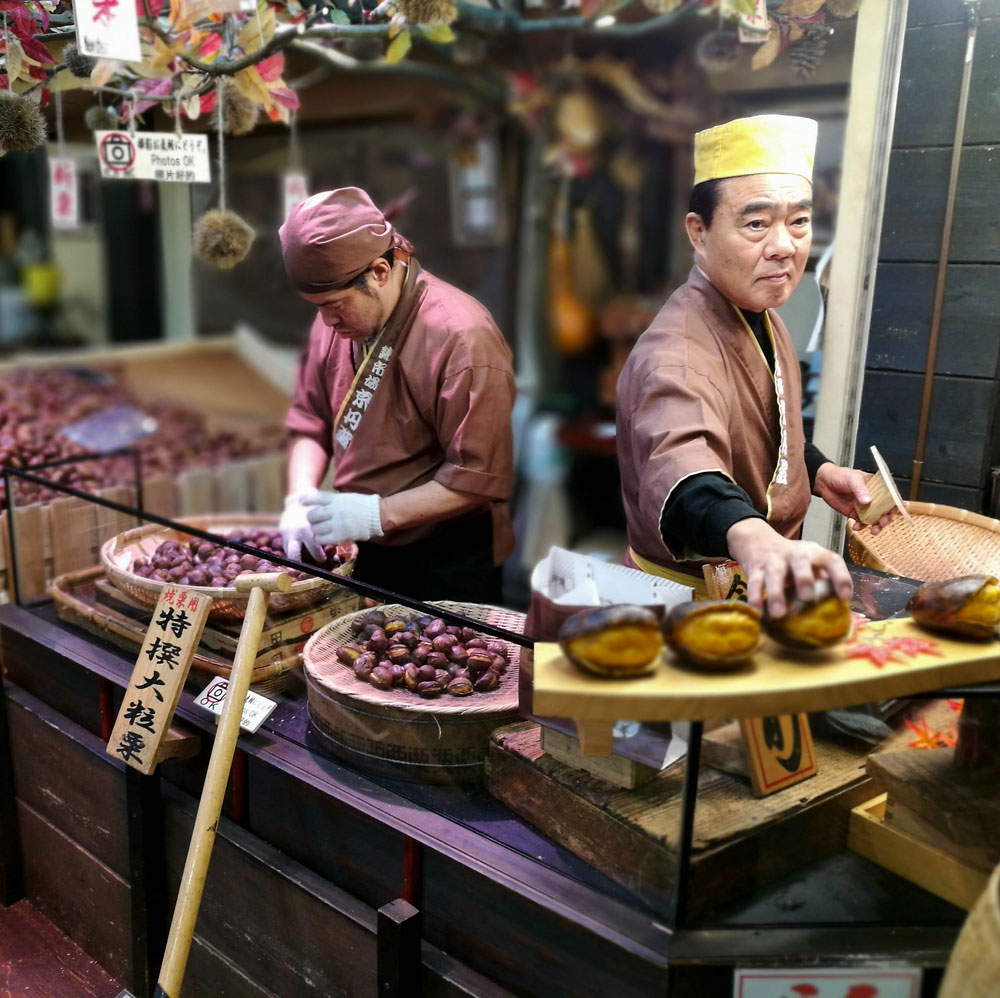
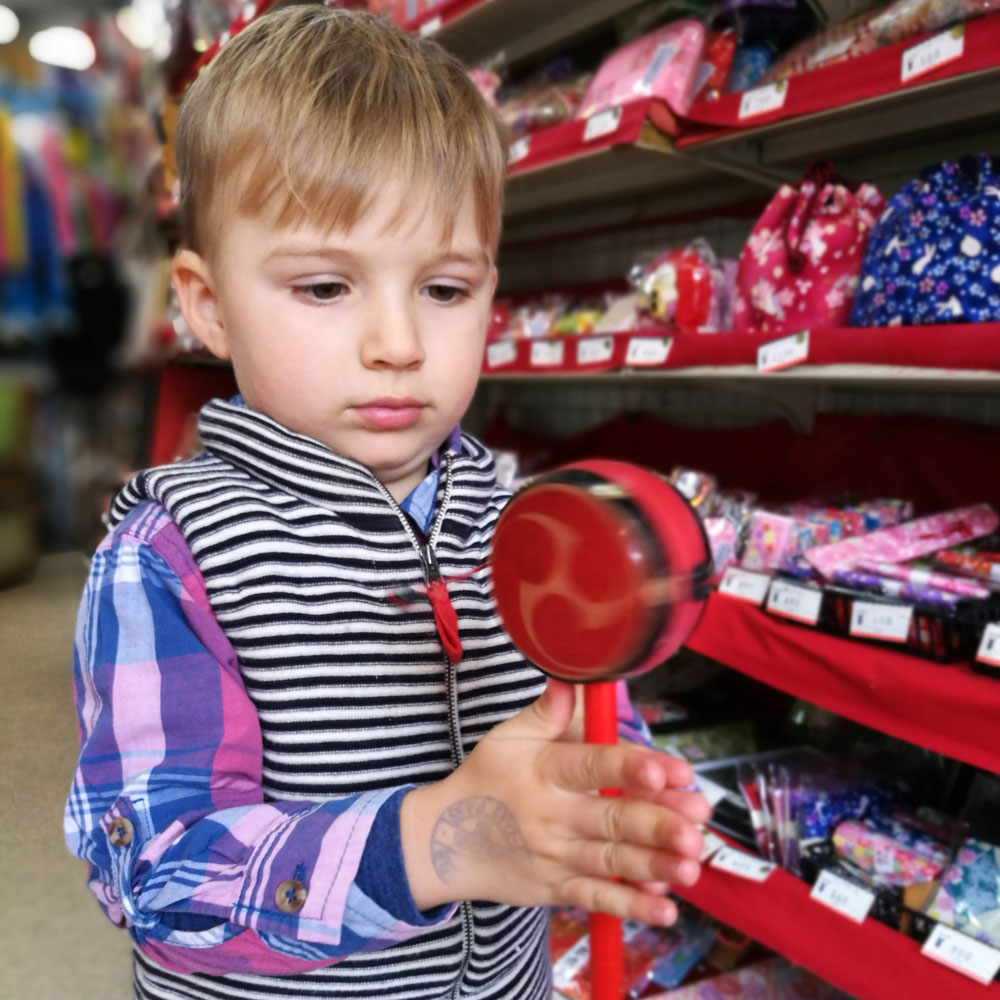


62. Collecting souvenirs – While a trip to a foreign land isn’t enough of a gift, it’s nice to find a memento of the experience and have something for your little one to cherish for years to come. We try to buy a practical gift that reflects the culture of your destination or a specific item that symbolises a highlight of the holiday.
- Perhaps a toy or musical instrument significant to that region?
- A raincoat or umbrella if the weather turns out to be a little wetter than expected?
- A plush toy animal such as an Orangutans of Borneo?
STAGE FIVE: BACK TO REALITY
63. Adjusting back to normal life isn’t easy for adults so chances are it may be a bit of a challenge for your little one too. Keep in mind that Jetlag may affect sleep routines and if you’ve spent an extended period of time in a different time zone, their whole rhythm is likely to be messed up.
64. Whether your child took their own photos (see tip 31) or you just have your own happy snaps, reviewing pictures as a family is a nice way to spark conversations about your experiences and relive the memories.
65. Keep the discussion going by comparing life overseas and stimulate their interest in travel and learning about other cultures by including them in the "stage one" of planning for your next adventure.
I hope you have found these tips useful and get the most out of every minute of your family trip.
If you have any other tips you'd like to share with our community we'd love to hear from you! Connect with us and follow our adventures on Instagram and join the conversation on Facebook.
Safe travels,



